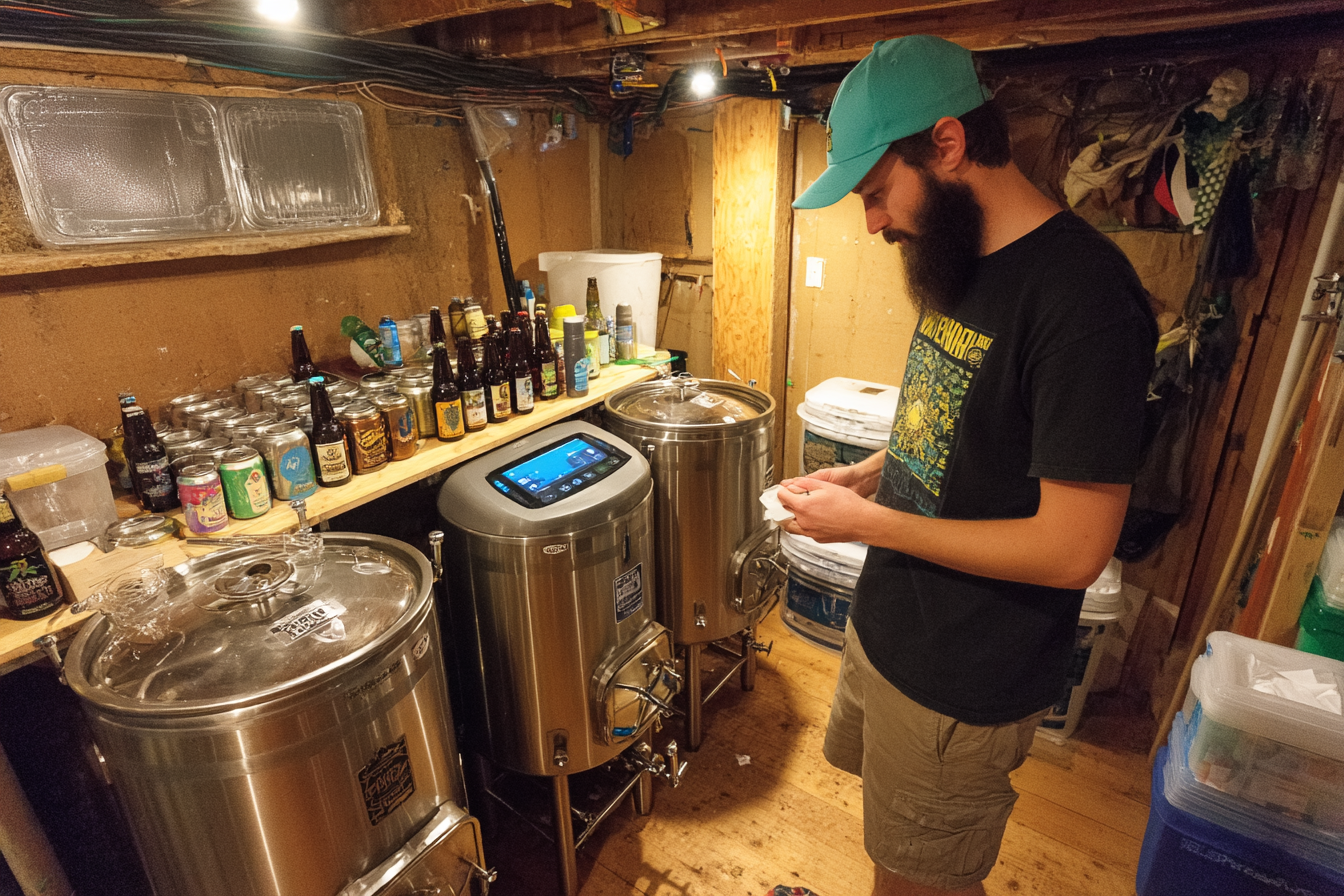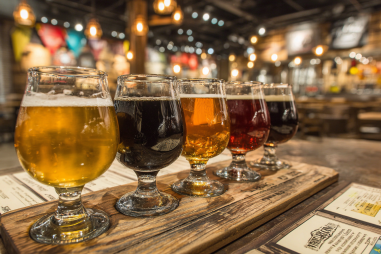Brewing an American Barleywine at home is a journey that combines both art and science. Known for its intense malt sweetness, elevated alcohol content, and complex flavor profiles, this formidable style offers a true test of a homebrewer’s skills. But with the right approach and a few expert tips, you can craft an exceptional American Barleywine that impresses both friends and seasoned beer enthusiasts alike. Whether you’re tackling your first batch or looking to refine your technique, these insights will help you avoid common pitfalls and produce a rich, balanced, and satisfying barleywine.
Understanding the Style Requirements
Before diving into the brewing process, it’s essential to fully grasp what defines an American Barleywine. This style typically boasts an alcohol by volume (ABV) ranging from 8% to over 12%, characterized by a robust malt backbone balanced by assertive American hop bitterness and aroma. Unlike their English counterparts, American Barleywines showcase bold American hop varieties like Cascade, Centennial, or Chinook, contributing piney, citrusy, and floral notes.
Getting familiar with the expected flavor and aroma profile will guide your ingredient choices and brewing techniques. Recognize that an American Barleywine is a big beer—intense and full-bodied, but it should never be cloying or one-dimensional. Balance, complexity, and a clean fermentation are key elements. Understanding these style parameters upfront ensures you set the right foundation for success.
Selecting Quality Ingredients
The ingredients you choose set the stage for a fantastic barleywine. Because this style is malt-forward, starting with a high-quality base malt, such as two-row pale malt, is crucial. From there, incorporate specialty malts like caramel or crystal malts to add depth, color, and sweetness. However, avoid overloading with specialty grains as they can make the beer overly sweet or heavy.
Hops play a significant role in American Barleywines, providing the necessary bitterness to balance the malt and layering aromatic character. Opt for fresh, high-alpha American varieties. Be prepared to use generous hopping rates for bittering and aroma additions. Dry hopping is also an option later in the process to enhance hop complexity without adding bitterness.
Don’t forget yeast selection—choose a clean fermenting ale yeast strain capable of handling high alcohol without producing off-flavors. High attenuation strains are preferred to avoid residual sweetness becoming excessive. Ensure your yeast is fresh and well-pitched to reduce stress during fermentation.
Managing High Gravity Wort
One of the biggest challenges with American Barleywine is the high gravity of the wort. With starting gravities often well above 1.100, the wort is thick and sugar-dense, making both the brewing process and fermentation demanding.
To handle high gravity wort effectively:
- Ensure thorough mixing: When preparing your wort, especially if steeping specialty grains or adding sugars, mix thoroughly to avoid dense pockets that can stress the yeast.
- Oxygenation: Provide ample oxygen to the cooled wort prior to pitching yeast. High gravity worts require more oxygen to support healthy yeast growth and metabolism.
- Dilution option: Some brewers prefer to brew a slightly stronger wort than targeted and then dilute post-fermentation to achieve the exact gravity, improving fermentability and yeast health.
Careful attention to these steps minimizes stuck fermentations and helps ensure your yeast can convert the sugars effectively, reducing unwanted sweetness and delivering the right body.
Controlling Fermentation Temperature
Temperature management during fermentation is vital for an American Barleywine. The yeast will be under stress due to high alcohol and sugar content, so maintaining a stable, controlled environment is necessary to prevent off-flavors like fusel alcohols, esters, or phenols.
Keep the fermentation temperature within the yeast’s recommended range—usually between 65°F and 72°F (18°C-22°C)—avoiding spikes that can create harsh flavors. Using a temperature-controlled fermentation chamber or a swamp cooler with a thermostat can make this easier.
Additionally, consider a lengthy and slow fermentation to allow yeast to fully metabolize the complex sugars. Patience here pays off, leading to a smoother, cleaner final product.
Aging and Conditioning Advice
Many homebrewers underestimate the power of aging when it comes to barleywine. Due to its high alcohol content and complex malt character, American Barleywine significantly benefits from extended aging and conditioning.
Age your barleywine in a cool, dark place for at least six months, and often up to a year or more, if possible. During this time, flavors meld together and harsh alcohol notes mellow out, resulting in a rounded, harmonious beverage. Glass carboys or stainless steel fermenters are preferred for aging since oxygen exposure should be limited.
Secondary fermentation or conditioning, including optional dry hopping toward the end of aging, can add aromatic layers without compromising the integrity of the beer. Just remember, patience is the secret ingredient here—a well-aged barleywine will reward you with complexity and depth beyond your expectations.
Avoiding Off-Flavors
Given its intensity, even minor off-flavors can be magnified in an American Barleywine. Here are some common pitfalls to avoid:
- Diacetyl: This buttery off-flavor can arise from stressed yeast or premature fermentation stoppage. To prevent it, allow for a healthy fermentation with proper yeast pitching and sufficient yeast health, and consider a longer maturation phase.
- Acetaldehyde: A green apple flavor indicating incomplete fermentation. Ensure fermentation finishes thoroughly before bottling or kegging.
- Oxidation: Be vigilant in minimizing oxygen exposure after fermentation, as oxidation causes stale or cardboard flavors that can ruin your brew.
- Hot alcohol notes: Strong fusel alcohols or solvent-like flavors come usually from high fermentation temperatures or stressed yeast. Maintaining steady cool temperatures is crucial.
Cleanliness and sanitation at every step can’t be overstressed. Infection or contamination is the enemy of a clean, quality barleywine.
Equipment Recommendations
While many homebrewers can craft excellent barleywine with basic equipment, some tools make the process smoother and more reliable, especially for such a challenging style:
- Large capacity brew kettle: High gravity beers require a big boil volume to concentrate sugars properly.
- Fermentation vessel with temperature control: A jacketed fermenter or temperature-controlled fermentation chamber can help manage the critical temperature profile.
- Oxygenation system: An aquarium pump with an oxygen stone or pure oxygen tank ensures adequate wort oxygenation.
- Accurate hydrometer or refractometer: Measuring gravity throughout fermentation tracks progress and helps diagnose problems early.
- Proper storage containers: Glass carboys or stainless steel fermenters for aging to prevent oxygen ingress.
Investing in these tools may seem daunting, but they greatly increase your chances of brewing a stellar barleywine.
Brewing Success with Patience and Precision
American Barleywine brewing is a rewarding challenge that tests your brewing knowledge and skills. By understanding the style, selecting the right ingredients, carefully managing the high gravity wort and fermentation process, and committing to proper aging and sanitation, you’ll produce a rich, complex, and balanced beer that is a joy to drink and share.
Remember, this style demands patience and respect—rushing any step can lead to disappointments. Trust the process, embrace precision, and don’t be afraid to experiment slightly to tailor the beer to your preferences. In time, your homebrew American Barleywine will not only meet style expectations but become a signature brew worth savoring.







